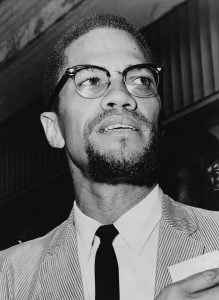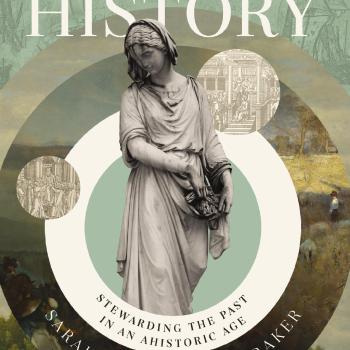“My heart is in Cairo,” declared Malik El-Shabazz (more commonly known as Malcolm X, formerly Malcolm Little) in July 1964. “And I believe the more progressive relations [and] forces in the Muslim world are in Cairo.”
If one teaches American religious history, it does not take long to recognize that undergraduate students love to discuss Malcolm X and do so with strong opinions. They are, however, very unlikely to have encountered any material on Malcolm X beyond his Autobiography or perhaps the Spike Lee film.
There are, however, excellent teaching resources that help students move beyond such first impressions. The late Manning Marable’s Malcolm X: A Life of Reinvention is now an essential companion to its subject’s autobiography. It provides outstanding analysis of the relationship between Alex Haley and Malcolm X, and it meticulously reconstructs the events surrounding the latter’s 1965 murder.
In terms of understanding the Nation of Islam as a religious movement beyond the celebrity or notoriety of its most famous adherent, I have found Edward Curtis’s Black Muslim Religion in the Nation of Islam an excellent classroom teaching tool. In his book, Curtis argues that “religious life in the NOI can be understood and analyzed as a subtle process of Islamization in which members of the NOI debated the meaning of their religion, accepting and rejecting various elements of other Islamic traditions as they struggled to practice a form of Islam that was relevant to their historical circumstances.” This is an important and carefully worded conclusion. Curtis takes “religion, and religious believers, seriously,” and he takes seriously the NOI’s claims (at different points of its history) to be Islamic. While Curtis explains that “Elijah Muhammad’s thought violated many fundamentals precepts of what has come to be known as Sunni Islam … that does not mean there was no connection between Sunni Islam and the religious culture of the NOI.” Indeed, Curtis documents that during Elijah Muhammad’s lifetime, a process of Islamization (visible in terms of dress, dietary guidelines, and rituals) contributed to black Muslim religious identity.
Curtis explains the complex ways in which NOI members encountered, interpreted, and sometimes appropriated a variety of Sunni Muslim traditions. Although he focuses on the choices made by NOI members, it occurs to me that large Sunni traditions exerted a centripetal force on upstart movements such as the NOI. This is not entirely unlike the twentieth-century influence of various forms of Protestantism on the Church of Jesus Christ of Latter-day Saints (also a complicated story).
That is all background to what initially prompted this post, an encounter with an essay by Curtis in the December 2015 issue of the Journal of American History (at least at the time of this writing available without a subscription here): “‘My Heart Is in Cairo’: Malcolm X, the Arab Cold War, and the Making of Islamic Liberation Ethics.”

Courtesy of the Library of Congress
Curtis’s essay helped me make clearer sense of two matters. First, he explains that for Malik Shabazz (a last name Malcolm had already used for some years prior to the hajj), “the heart of Islam, and of religion more generally, was ethics,” and it was not a matter of private righteousness but public activism. Thus, Shabazz (as Curtis identifies his subject throughout) was Islamic prior to his pilgrimage even though on an earlier trip to Egypt he could only “mumble along” while others prayed. He had identified Islam as the vehicle for black liberation. Although his understanding of Islam evolved, his essential religiosity did not. Thus, he came to use the Sunni Islamic tradition to argue that the liberation of African Americans “was a moral obligation of all Muslims.” Islam, and religion more generally, was not first and foremost a private individual affair.
Second, Curtis narrates Shabazz’s careful negotiation between the competing movements of Egyptian President Gamal Abdel Nasser and his Saudi counterparts. For Shabazz, both visions were Islamic. Although he privately conveyed his greater sympathy for Nasser’s revolutionary platform, Shabazz also sought funding from the Saudi-backed Muslim World League. His heart was with Cairo, but his mind told him to cultivate many allies. Shabazz, though, rejected the MWL’s point of view that the spread of Islam alone would eliminate the scourge of racism, just as — extending Curtis’s argument — liberal Protestants in the United States rejected the contention of Billy Graham and like-minded evangelicals that evangelism alone would solve social problems.
The essay, hopefully part of a forthcoming book, is an essential resource for understanding not only Malcolm X’s activities following his rupture with the NOI but for placing black Muslim religion in a broader international context.












